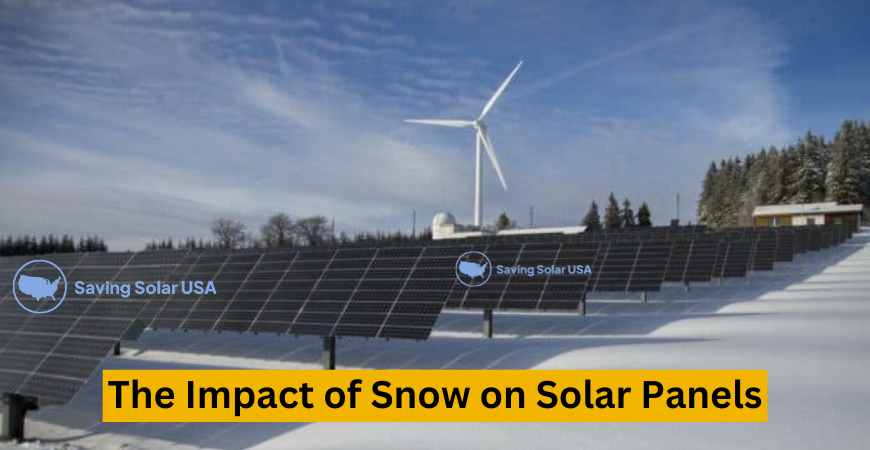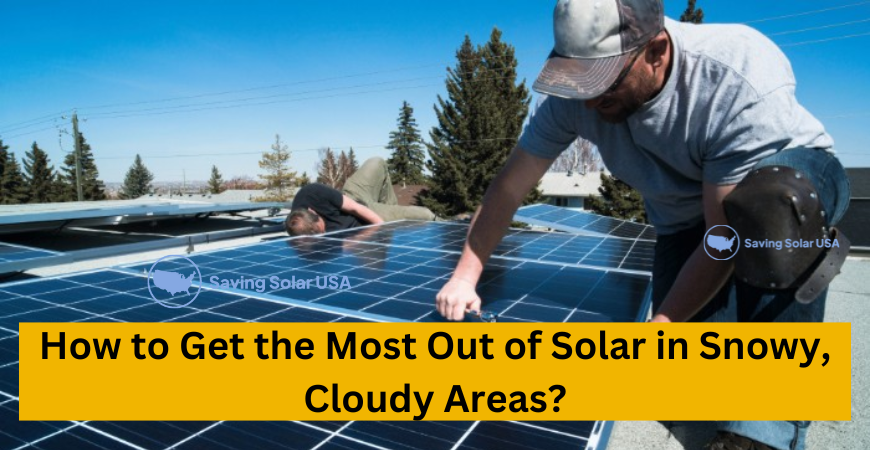Is Solar Worth it in Cloudy or Snowy Climates?
Solar energy is almost completely dependent on the sun. The sun fuels the panels to power your home. When there is no sun, the panels will not receive power. Limited sunlight reduces power production.
One may wonder, is it worth it to have solar in a cloudy or snowy climate? This article will review the pros and cons so you can determine if solar panels are right for you.
Do Solar Panels Work in Cloudy Environments?
Solar panels still work on cloudy days. However, their efficiency is reduced by 10% to 25% depending on the amount of cloud cover.
However, there are some upsides to installing solar in an area that experiences a lot of cloudy weather. Those areas tend to be cooler than regions that experience mostly sunny days.
Extreme heat also impacts a solar panel’s ability to produce energy. Output begins to fall when temperatures reach 77 degrees Celsius. So, the coolness of the weather can offset losses.
Areas prone to inclement weather may also experience breezes and even strong winds. Wind helps solar power production. It cools panels so they don’t overheat and whisks off the humidity.
Water droplets can reflect sunlight away from panels reducing their efficiency. Wind removes the droplets making panels more efficient.
See Also: What is the Right Solar System for Your Home? 10 KW Solar System VS 9 KW Solar System
The Impact of Snow on Solar Panels:

Snow can also impact a solar panel’s efficiency. Firstly, snow typically occurs in cloudy environments. The reduced sunlight decreases power production.
Additionally, the snow can block sunlight and cause the panels to shut down temporarily. However, the snow tends to melt quickly. Also, panels are usually installed at an angle allowing snow to slide off.
The snow can also reflect sunlight onto the panels increasing energy production.
Some homeowners may be concerned that snow can damage the panels or lead to advanced maintenance. However, most panels are designed to handle a certain amount of weight and are rated for two to four feet of snow. Cleaning is rarely needed because the snow won’t stick to panels for long.
However, if you feel snow residue is an issue, specialized systems can eliminate the problem. For example, you may try:
Heating Systems: These heating systems melt snow and monitor the weight of the snow on top of the panels to prevent hazards.
- Snow Resistant Covers: Translucent snow covers fit tightly over panels allowing sunlight to reach the individual cells. There are various types of snow-resistant covers on the market. Ensure you purchase one suited to your panel type.
Automated Cleaning Systems: An automated system must be connected to an existing water supply. It uses water to produce a low-volume water and biodegradable soap spray. The soapy mixture is then rinsed with pure water to keep your panels clean.
Do Weather Conditions Affect Solar Cost and Adoption?
There is no evidence that weather conditions impact solar adoption in states that are prone to cloudy conditions and snowfall. It may be more about state size and population.
For example, Vermont is a small state that sees 89.5 inches of snowfall a year. It is ranked 37th for solar generation in the United States. New York, a highly populated state with lots of businesses, sees 55.32 inches of snowfall a year and ranks as number 8 for solar power generation.
Additionally, while the cost of solar installation varies depending on where you live, there is no evidence that your system will cost less based on weather conditions in your area. The price is more dependent on your installer, the prices of living in your area, the system size, the type of equipment, and additional features.
How to Get the Most Out of Solar in Snowy, Cloudy Areas?

Consumers considering solar installation in a snowy or cloudy area can get more out of their panels by:
- Using monocrystalline panels: Monocrystalline panels are the most efficient panels with efficiency ratings in the 15% to 20% range compared to polycrystalline which has a 13% to 16% efficiency range. They produce more energy in low-light conditions. Monocrystalline panels can also be a good choice for people in hot, sunny climates because they stand up better to heat.
- Installing a Solar Battery: A solar battery stores the energy your system makes on sunny days so you can use it at nighttime and on cloudy days.
- Optimize the Angle of Your Panels: A knowledgeable installer will angle your panels to maximize the lower position of the sun that occurs during winter. You may also install a tracking system that allows panels to track the sun’s movement throughout the day and angle accordingly.
- Monitor Performance: A monitoring system will measure your panel’s performance so you can identify productivity dips and determine the cause.
- Regular Maintenance: There is little need to clean snow off your panels, but winter storms may produce dirt and debris that impact efficiency. Perform routine inspections to ensure your panels are clean.
- Avoid Shading: Cloud cover and snow can reduce your panel’s ability to absorb sunlight. Absorption will be further reduced if trees and buildings interfere with the sun’s path. Consider trimming trees that block the sun’s path. Angle your panels so they absorb optimal sunlight.
- Check Weather Reports: Check weather reports so you know what to expect and can prepare accordingly.
- Insulate to Optimize Energy Use: Insulation can reduce the need for solar-powered heating so you can make the most of the energy available.
- Use Energy-Efficient Appliances: Energy-efficient appliances will use less of the energy produced so they last longer.
Is It Worth it to Get Solar in Snowy and Cloudy Climates?
People in snowy and cloudy climates must make the same considerations as anyone else when deciding if solar is right for them. It typically comes down to whether the energy savings will make up for installation costs. However, environmental concerns are also an issue.
In any case, here are the steps you need to take to determine how much you can save by going solar.
Learn About Up Front Costs
Talk to various contractors to determine how much you will pay for solar. Choose a contractor that offers the best value for your money,
Subtract Tax Credits and Incentives
Taxpayers can save money on panel installation through the Federal Solar Tax Credit. Individuals may get 30% of the money they spend on solar back via a tax credit to offset expenses. They may also be eligible for additional incentives in their area.
Check Your Electric Bill:
Your monthly electric bill will give you some indication of how much you save on solar. Look at least six months’ worth of bills to account for temperature changes and cost fluctuations to get an average. Multiply the average by 12 to get your annual expenses.
While your electric bill can estimate your savings, it may be impossible to tell whether your solar power will cover all your electrical needs or just a portion. Additionally, some utility companies may charge a fee for staying connected to the grid.
Another consideration is a possible fluctuation in energy costs. According to Statista, the cost of residential electricity is expected to increase by 2% annually. However, various factors can impact electricity rates.
You must also consider that your panels will lose efficiency over time decreasing output.
Contact Solar America to Learn About the Best Options for Solar in Your Area
If you have weighed your options and feel solar is right for you, the next step is to contact Solar America. Put your details into our online form. Our database will return various contractors in your area. Choose which is best suited to your needs. Our competitive system ensures you get the best prices.
Contact us to get matched with a contractor who will ensure you get the most from your solar installation.
FAQs:
People in areas prone to cold weather may wonder if extreme temperatures can impact their panels’ efficiency. However, most panels will continue operating efficiently in temperatures as low as up to -40 degrees Fahrenheit, so most regions won’t have to worry about freezing weather.
Yes, regular exposure to high temperatures can increase the resistance of PV cells causing panels to become less efficient.

